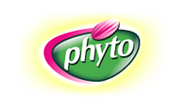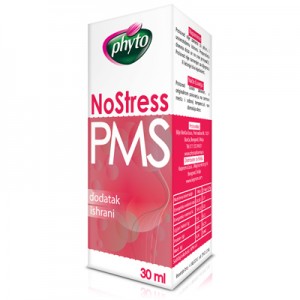NoStressPMS
NoStressPMS
NoStressPMS drops contain fruit from the Chasteberry, which has beneficial effects for a woman’s hormonal balance and for maintaining a normal menstrual cycle.
NoStressPMS drops contain an aqueous-ethanol extract of the Chasteberry fruit (Agni casti fructus). Chasteberry affects the amount of progesterone and lowers prolactin levels. It acts on the hypothalamus and hypophysis and establishes a balance in the production of estrogens and progesterone. Indirectly, it leads to an increase in the creation of progesterone and the normalization of prolactin levels.
This combination of effects caused by Chasteberry gives rise to balanced levels of estrogens and progesterone. It is most frequently used for PMS and abundant or irregular menstrual cycles. Chasteberry helps the body balance estrogen and progesterone levels by stimulating progesterone production. If taken continuously over the course of several months, it helps establish hormonal balance and reduce symptoms of PMS.
Chasteberry affects the hypophysis by reducing the secretion of the hormone prolactin, thus helping to establish a normal balance between estrogens and progesterone. This is why it is very useful for problems associated with the menstrual cycle as well as premenstrual ones caused by a hormonal imbalance.
Dosage: 25 drops in the morning with a little water.
Ingredients: 30 ml of Chasteberry fruit tincture (Agni casti fructus tinctura) (1:5)
Vitex agnus-castus / Chasteberry
From Forensic Science and Medicine:
Herbal Products: Toxicology and Clinical Pharmacology, Second Edition
Edited by: T. S. Tracy and R. L. Kingston © Humana Press Inc., Totowa, NJ
Chapter 16
Vitex agnus-castus / Chasteberry
Margaret B. Artz
- extract -
2. CURRENT PROMOTED USES
Current promoted uses of V. agnus-castus relate to treatment of disorders of the female reproductive system such as short menstrual cycles, premenstrual syndrome (PMS), and breast swelling and pain (mastodynia/mastalgia). The Commission E has approved the use of V. agnus-castus for irregularities of the menstrual cycle, premenstrual complaints, and mastalgia (10,11). Recent randomized, placebo-controlled studies have been conducted and found V. agnus-castus to be effective and well-tolerated for the relief of PMS symptoms, especially the physical symptoms of breast tenderness/fullness, edema, and headache (12–14)…
5.5. PMS and Menopausal Symptoms
In a 1997 multicenter, randomized, double-blind, controlled trial, Lauritzen et al. examined the efficacy and tolerability of a commercially available capsule formulation of V. agnus-castus (Agnolyt) compared with pyridoxine in women with PMS. Inclusion criteria were females aged 18 to 45 years, PMS symptoms in luteal phase of menstrual cycle, PMS symptoms with each cycle, PMS symptoms affecting quality of life, and no drug therapy for PMS in 3 months preceding the study. Of 175 participants, 85 were in the V. agnus-castus group (took one capsule twice a day, with one capsule containing 3.5 to 4.2 mg of V. agnus-castus, the second capsule containing placebo), and 90 were in the pyridoxine group (days 1–15, took one capsule twice a day, each capsule containing placebo; days 16–35, took one capsule twice a day, each capsule containing 100 mg of pyridoxine). Women in both treatment groups had equal reductions in PMS scores (V. agnus-castus: 15.2 to 5.1; pyridoxine: 11.9 to 5.1; p = 0.37), suggesting no differences in effect (12).
In 2000, Loch et al. conducted an open label, uncontrolled study examining the efficacy and safety of a new oral V. agnus-castus treatment (Femicur®) for PMS complaints. Suffering from PMS was the only inclusion criterion and pregnancy was the only exclusion criterion. A questionnaire on mental and somatic PMS symptoms was completed by 857 gynecologists after interviewing 1634 females at the start of Femicur therapy (20 mg daily), and after a period of three menstrual cycles under therapy. Physicians reported that 42% of women reported that they had no more PMS symptoms, 51% showed a decrease in symptoms (p < 0.001), and 1% had an increase in number of symptoms. After 3 months of treatment, both psychic and somatic complaints were dramatically lowered. Although 30% of the women still complained about mastodynia after V. agnus-castus treatment, most reported complaints of lower intensity. Physicians described the patients’ tolerance of this V. agnus-castus product as good or very good in 94% of women. Although one of the authors works for the pharmaceutical company that makes Femicur, the article did not contain funding disclosure statements (6).
In 2000, Berger et al., using a prospective, multicenter trial design, examined the efficacy of an oral, casticin-standardized V. agnus-castus therapy on 43 women diagnosed with PMS. Treatment phases consisted of baseline (two cycles, pretreatment), treatment (three cycles), posttreatment (three cycles, no treatment). The dose was 20 mg, but no placebo control was included. At the end of the trial, Moos’ menstrual distress questionnaire (MMDQ) scores were reduced by 43% compared with start (statistically significant, p < 0.001), but that improvement decreased gradually in the posttreatment phase. At the end of the posttreatment phase, patients had improved compared to the start of therapy (p < 0.001) and for up to three cycles thereafter. A group of 20 women had baseline MMDQ scores that were reduced by at least 50% at the end of treatment phase. Visual analogue scale (VAS) and global efficacy scales showed similar findings (p < 0.001 and global efficacy rated excellent by 38 women). Areas of improvement included symptoms related to pain, behavior, negativity, and fluid retention. The most frequent adverse events were acne, headaches, and menstrual spotting (31). In 2001, using a prospective, randomized, double-blind, placebo-controlled, parallel-group comparison design, Schellenberg studied the efficacy and tolerability of V. agnus-castus extract on PMS (13). Participants were female outpatients, 18 years of age or older, of six general medicine clinics and had a PMS diagnosis according to the Diagnostic and Statistical Manual of Mental Disorders, third edition, revised. Dose of V. agnus-castus was 20 mg daily for 3 months. Results showed that the group receiving V. Agnus castus had significant improvements (p < 0.001) in all symptoms except bloating compared to the placebo group. Sensitivity analyses removing women taking contraceptives did not alter results. Tolerability was good with acne, itching, and mid-cycle bleeding as the adverse events noted (13).
An uncontrolled study in 2002 by Lucks examined the effects of 3-month dermal application of V. agnus-castus essential oil (oil distilled at some point in the shrubs’ development of the fruit but while some leaves were still on the plant) on menopausal and perimenopausal symptoms. A 1.5% solution of the essential oil was incorporated in a bland cream or lotion and applied once a day, 5 to 7 days/week, for 3 months. Descriptive outcome measures were self-report via a survey of symptomatic relief (major, moderate, mild, none, worse) and side effects. A total of 33% of women reported major improvement in symptoms, with the most often area of improvement being hot flashes/night sweats. Both improvement and worsening occurred in the areas of emotions and menstruation flow. Subjects who were also on progesterone supplementation reported breakthrough bleeding (7).




